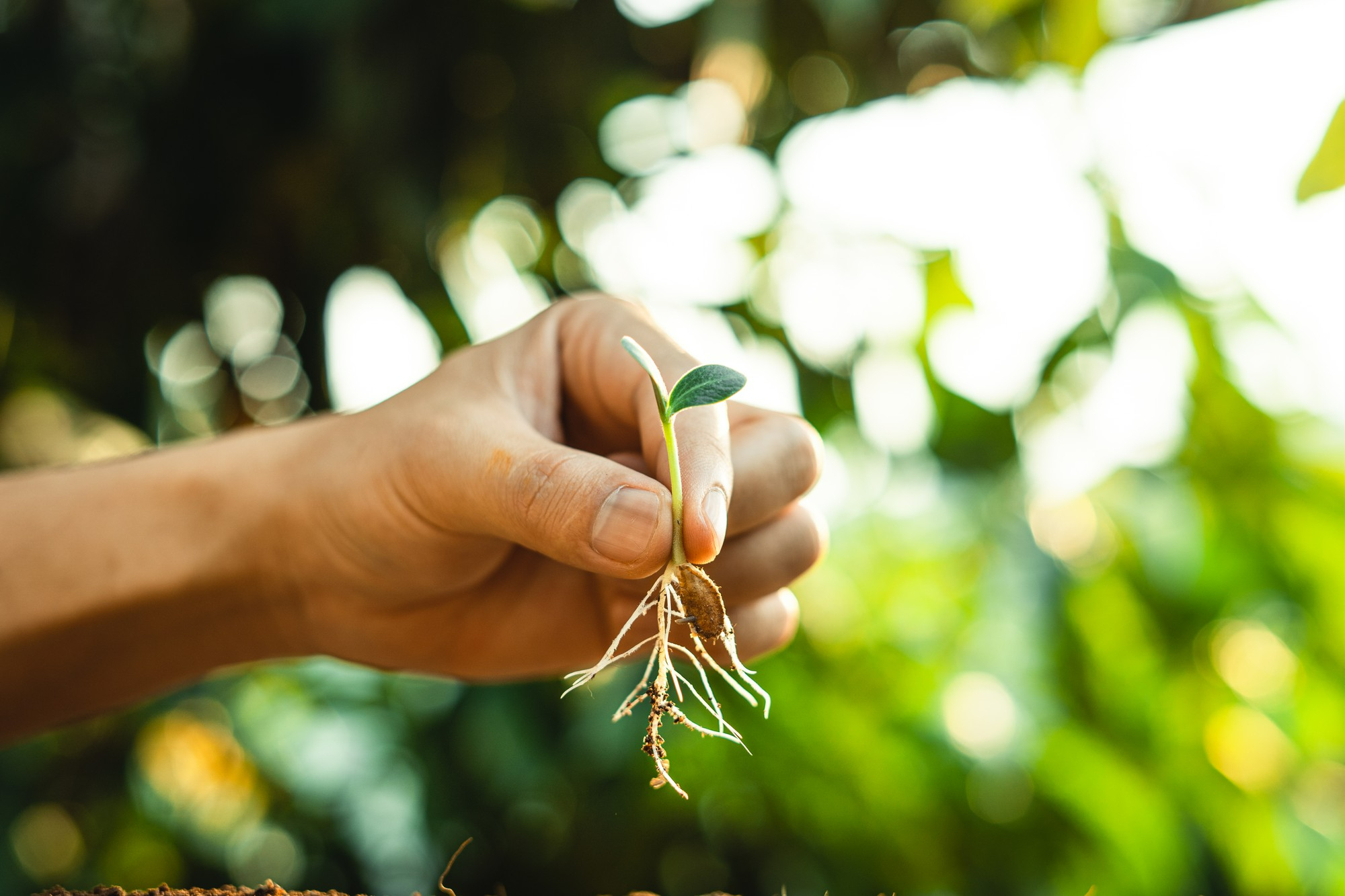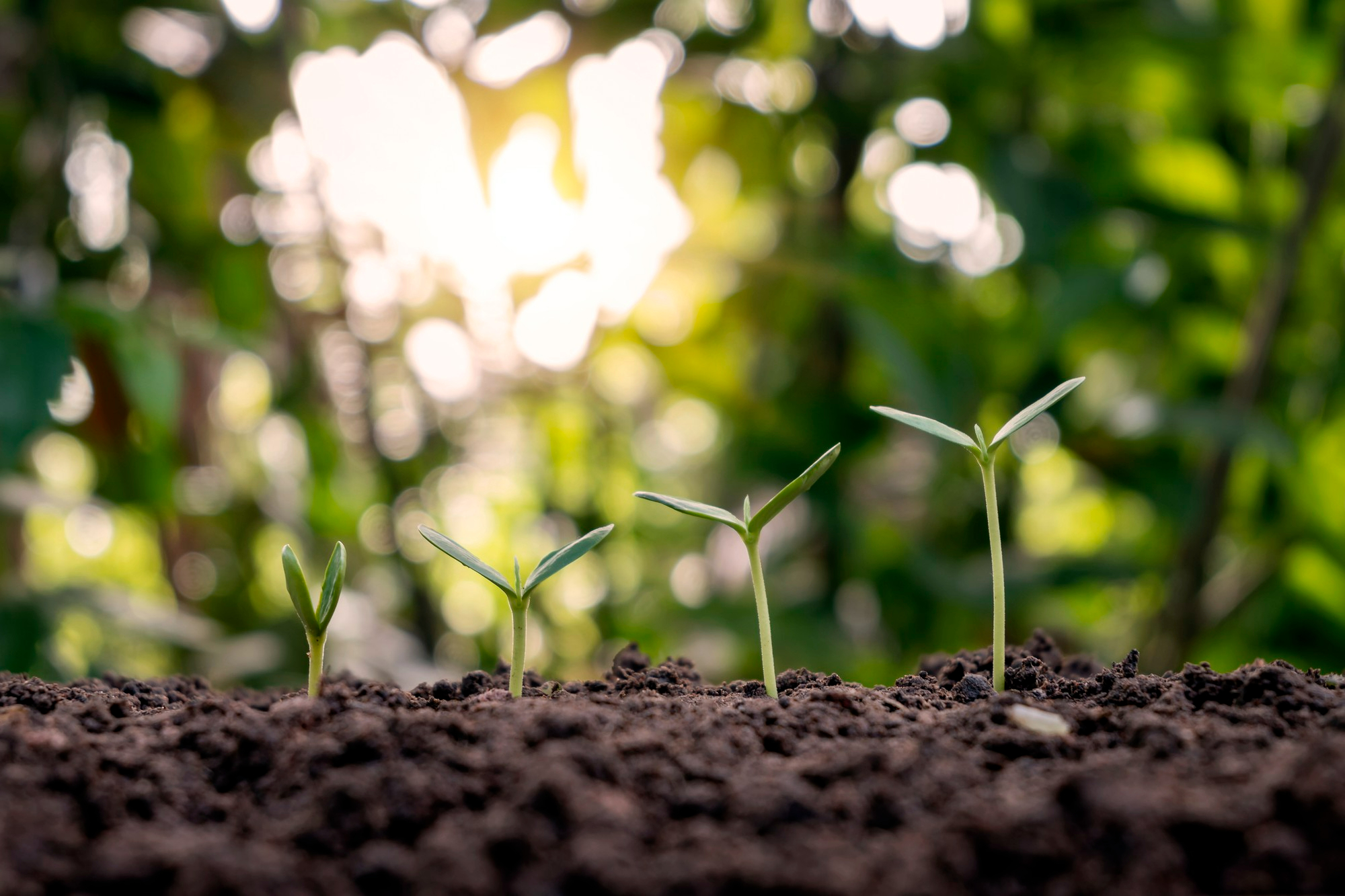Although many people might think that applying gypsum is a form of soil liming, these are two completely different agricultural practices with one main element in common: calcium.
Calcium is an essential micronutrient for any crop, responsible for cell division and growth, protein synthesis and carb transportation and for the cell wall structure. However, it is most popularly known for the role it plays outside the plant system, which is the correction of soil acidity.
It is important to stress that the increase of the soil’s pH by neutralizing its acidity is a characteristic exclusive to lime, and is only related to calcium because it is part of its structure (CaCO3). So, if this is your main goal, gypsum is not the answer.
 Gypsum, also known as calcium sulfate is not an acidity corrective, but a soil conditioner, which means it
won’t affect the pH, but it will promote the improvement of physical, chemical and biological properties of
the soil, especially on the subsoil.
Gypsum, also known as calcium sulfate is not an acidity corrective, but a soil conditioner, which means it
won’t affect the pH, but it will promote the improvement of physical, chemical and biological properties of
the soil, especially on the subsoil.
You might be wondering how this improvement happens. Well, there are many ways that gypsum can be beneficial to the plant. It carries calcium deep in the soil Due to gypsum’s high solubility, it quickly increases the concentration of calcium deeper in the soil improving its fertility. As mentioned before, calcium is a very important nutrient for plants for various reasons. One of them is cell division and growth, so, in order for the roots to grow, it is necessary to have enough calcium available for them. The problem is, calcium’s mobility in the soil is quite low, so it usually stays on the surface causing most of the roots to stay on the soil surface as well. Also, this nutrient is absorbed in the root cap, consequently, the deeper the nutrient goes on the soil profile, the more contact it will have with the root cap and the more it will stimulate its growth.
 It provides nutrients for the plants
Calcium sulfate is a by-product of the phosphate fertilizer industry, so it contains P205 and it is a source
of essential nutrients for the plants such as calcium and sulfur. Calcium’s importance has already been
discussed, but it is worth mentioning how sulfur can be beneficial for the plant. The element S is
responsible for hormonal control, influencing growth and development, helps on the plant’s defence against
bugs and diseases and it’s an important component of the proteins.
Reduces aluminum toxicity
The gypsum applied on the surface leaches down to the subsoil and the sulfate reacts with the soluble
aluminum located deeper in the soil profile, decreasing its toxicity and allowing the roots to grow.
Helps recover sodic soils
Some soils, usually in semi-arid regions, suffer from very high concentration of salts and sodium, mostly
due to high evaporation, low rainfall and lack of drain ability. Gypsum is used in these cases as a soil
corrective agent, because it improves drainage, allowing the water to move into the soil and leach the
excess minerals.
It provides nutrients for the plants
Calcium sulfate is a by-product of the phosphate fertilizer industry, so it contains P205 and it is a source
of essential nutrients for the plants such as calcium and sulfur. Calcium’s importance has already been
discussed, but it is worth mentioning how sulfur can be beneficial for the plant. The element S is
responsible for hormonal control, influencing growth and development, helps on the plant’s defence against
bugs and diseases and it’s an important component of the proteins.
Reduces aluminum toxicity
The gypsum applied on the surface leaches down to the subsoil and the sulfate reacts with the soluble
aluminum located deeper in the soil profile, decreasing its toxicity and allowing the roots to grow.
Helps recover sodic soils
Some soils, usually in semi-arid regions, suffer from very high concentration of salts and sodium, mostly
due to high evaporation, low rainfall and lack of drain ability. Gypsum is used in these cases as a soil
corrective agent, because it improves drainage, allowing the water to move into the soil and leach the
excess minerals.
Furthermore, in the soil solution the ion Ca2+ dislocates the Na+ ion, so, when calcium sulfate is applied, the sodium bonds with the sulfate, increasing its solubility and moving it deeper into the soil, until it is finally drained. Increases water and nutrient absorption Given the nutrients it provides, the neutralization of toxic minerals and the enhance of root growth, gypsum is an ally to plant development and yield improvement, because it increases the plant’s water and nutrient absorption, leading to healthy growth.
Another yield increase ally is the i-Plant Nutrition, with tools that can help you maximize yields while saving up to fifty percent on fertilizer costs. WHEN TO USE GYPSUM
 The best results for gypsum application will be seen in areas that suffer from droughts and need deeper
roots to absorb water, therefore don’t have calcium in the subsoil, because the lack of water will not allow
the nutrient to go deeper in the soil or get in contact with the root by mass flow as it should.
The best results for gypsum application will be seen in areas that suffer from droughts and need deeper
roots to absorb water, therefore don’t have calcium in the subsoil, because the lack of water will not allow
the nutrient to go deeper in the soil or get in contact with the root by mass flow as it should.
Also, gypsum can be used in areas with low calcium on the soil like tropical regions, where calcium is easily leached by excessive rainfall.
To know whether the crop will respond to gypsum, it is necessary to observe the calcium, aluminum, and base saturation values of the soil test considering 20-40 cm depth (or 8 to 16 inches). If the test shows either low calcium, low base saturation or high aluminum, the use of gypsum is recommended, and should be applied all over the land before planting.






